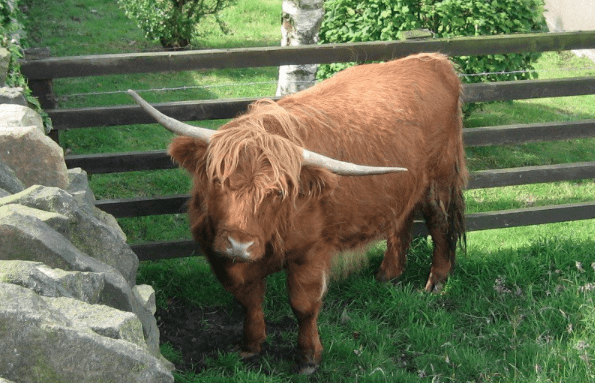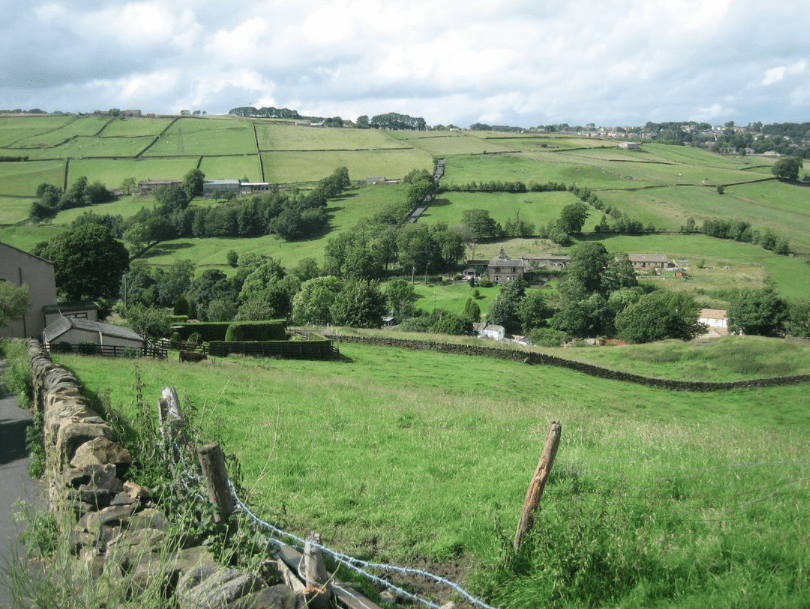Sylvia Pamboukian
Moon Township, Pennsylvania, United States

The James Herriot veterinary stories are so beloved by readers that they have inspired two television series called All Creatures Great and Small and have sold over sixty million copies.1 James Herriot is the pen name of James Alfred “Alf” Wight, who was born in 1916 and graduated from the Glasgow Veterinary College in 1939. Soon after, Wight found work in Thirsk, Yorkshire—the inspiration for Herriot’s village of Darrowby—where he practiced until the mid-1960s when he turned to autobiographical fiction.2 Beyond mere charm, the Herriot stories offer insight into the social and emotional complexities of life as a healthcare professional. A particularly relevant example is Herriot’s experience with job stress and burnout, a word not coined until the 1970s and not used in the series itself.3 Nevertheless, the Herriot stories sympathetically depict features of burnout and model both healthy and unhealthy coping mechanisms.
In several stories, Herriot describes burnout occurring in epidemic situations. For example, in Chapters 41 and 42 of All Creatures Great and Small, Herriot depicts bovine tuberculosis testing, a tedious Ministry requirement in the 1940s designed to prevent the spread of tuberculosis through milk.4 At first, James gloats, “Ministry work was easy, any practitioner could tell you that . . .”5 But testing day slowly breaks him down. At his first visit, the farmer fails to have the cows in the byre, as per Ministry instructions.6 After hours lost herding, James reaches the second farm very late. These cows are properly in the byre, and James is delighted to learn that the farmers have each cow’s identity number in the Ministry-required herd record (236). Unfortunately, the numbers on the cows’ ears do not match the record, and James begins to realize that procedure and practice may be worlds apart.7 At his next stop, a farmer frustrated with Ministry requirements redirects his anger at James’s lateness: “This isn’t one o’clock Maister! . . . My cows have been in all afternoon and look at the bloody mess they’ve made.”8 The next farmer is not even home, so James tackles the herd alone “feeling sick to death of the sight and smell of cows and fed up with pawing at their udders.”9 Working “almost automatically,” he is kicked by a cow.10 At his last farm, James palpates udder after udder with his mind “numb” and his motions “like a robot” until he is startled by the farmer’s gleeful shout, “You’re wasting your time there, young man. There’s nowt wrong wi’ HIS bag.”11

In this story, repetition grinds James down from happy vet to soulless robot. Since he identifies only one cow who needs follow-up, the tedium seems especially futile. In depicting animal-lover James as uninterested in animals, inattentive to his work, and emotionally numb, narrator Herriot anticipates modern signs of burnout, including depersonalization, diminished personal accomplishment, and emotional exhaustion.12 These chapters illustrate two healthy coping methods. First, the kindly voice of narrator Herriot changes perspective by explaining, “’screws’ [tubercular cows] were all too common thirty years ago. . . . Often they were good milkers and ate well, but they were killers and I was learning to spot them.”13 Thirty years on, readers see the long-term benefits that poor James cannot appreciate in the moment. If this wider perspective is unavailable to James, the chapter presents a second method of coping. At first, James plans to “make up time” by eating as he drives between farms, but then he reconsiders:
“This was no good. . . . I pulled off the unfenced road on to the grass, switched off the engine and opened the windows wide. . . . the silence and the emptiness enveloped me like a soothing blanket. I leaned my head against the back of the seat and looked out at the checkered greens of the little fields along the flanks of the hills. . . .
I felt better when I drove away and didn’t particularly mind when the farmer at the first inspection greeted me with a scowl.”14
James remedies burnout by focusing on the moment—grass, silence, greens, emptiness, hills—in what we might call mindfulness and self-care in nature, activities still encouraged as a restorative to burnout.15
In contrast to the slow-moving tuberculosis epidemic, Chapter 45 in All Things Wise and Wonderful describes an acute outbreak of foot-and-mouth disease.16At first, James is casually chatting with pig farmer Mr. Duggleby when he notices blisters on the pigs’ snouts and “a warning bell clanged suddenly in [his] head.”17 Immediately, James informs the farmer that he has to telephone the Ministry, and the local officer instructs James to stay put until he arrives for fear of spreading the virus. In the moment, James can only outline procedure for the anxious farmer: if disease is confirmed, all the pigs will be slaughtered.18 Duggleby quickly accepts the situation, commenting only, “These things ‘appen.”19 The voice of older narrator Herriot contrasts the Yorkshireman’s acceptance with his own frustration: “The old Yorkshire words. I had heard them so often under circumstances that would make most city folk, including myself, beat their heads against a wall. Mr. Duggleby’s smallholding would soon be a silent place of death, but he just chewed his pipe and said, ‘These things ‘appen.’”20 In her reading of the Poison Arrow story of the Buddha, Tara Flanagan points to “the futility of dwelling on potentially unanswerable questions, particularly when doing so can result in neglecting one’s immediate situation and health needs.”21 Duggleby remains rooted in the present rather than engaging in fruitless speculation about how his pigs were infected, why this happened to him, how much income he will lose, or when he can restock. Unlike the frustrated farmer in the tuberculosis chapter, he does not blame James or Ministry procedure. In contrast, James ruminates over the past and catastrophizes the future: “If I had failed to spot the disease, I would have gone merrily on my way, spreading destruction and havoc.”22 Since his next visit was to a pedigree herd, he frets, “peerless cows, a strain built up over generations . . . and I would have been the cause of their annihilation.”23 His ruminations add to the already tense situation:
“Once Foot and Mouth is confirmed in a district there is a tense period of waiting. Farms, veterinary surgeons and most of all Ministry officials are on the rack, wondering if there has been any dissemination before diagnosis, bracing themselves against the telephone message that could herald the raging spread they dreaded and which would tear their lives apart.
To the city dwellers a big Foot and Mouth outbreak is something remote they read about in the newspapers. To the country folk it means the transformation of the quiet farms and fields into charnel houses and funeral pyres. It means heartbreak and ruin.
We waited in Darrowby.”24
The words wondering, bracing, and dreading imply a kind of self-inflicted torture born of fruitless speculation about what-might-have-been (but is not yet and may never be). In this case, it is Duggleby who models effective coping while James tortures himself with fruitless speculation.
These stories were written well before the modern language about burnout developed, yet they illustrate features of burnout drawn from “Alf” Wight’s own experience. Whether through the tedium of testing or the shock of a sudden outbreak, epidemics lead James to feelings of futility, emotional overload, and depersonalization. Words such as numb and robot and mistakes such as testing a bull reveal a shift from his usual cheerful and attentive demeanor. Trapped between unreasonable Ministry expectations and farmers’ frustration, James engages in behaviors that are both harmful (fretting, catastrophizing) and restorative (nature, mindfulness). By depicting both responses, the stories create a practitioner who is warmly human, subject to the same kinds of distresses and responses as readers themselves. Drawing upon Wight’s keen observational skill and lifetime of experience, the Herriot stories are replete with humor and charm, but they also offer ways to approach issues such as burnout and models of coping with the vicissitudes of professional life.
End notes
- “Who is James Herriot and How True is All Creatures Great and Small?” British Telly Dish, last modified January 10, 2021, https://www.thirteen.org/blog-post/all-creatures-great-and-small-james-herriot-true/.
- Life and Times.” JamesHerriot.org, Accessed August 5, 2021. https://www.jamesherriot.org/life-and-times/.
- Oxford English Dictionary, online ed. (Oxford: Oxford University Press, 2021), s.v. “Burn-out,” www-oed com.reddog.rmu.edu/view/Entry/25030?rskey=TwDQWM&result=5&isAdvanced=false#eid11869198.
- According to the CDC, human infection with Mycobacterium bovis from cattle is rare in the United States. The USDA maintains an eradication program involving testing, isolation, and destruction of infected animals, and over a million are tested annually. CDC, “Mycobaterium bovis (Bovine Tuberculosis) in Humans,” last modified August, 2011, www.cdc.gov/tb/publications/factsheets/general/mbovis.pdf. USDA, “National Tuberculosis Eradication Program,” last modified October 23, 2020, https://www.aphis.usda.gov/aphis/ourfocus/animalhealth/animal-disease-information/cattle-disease-information/national-tuberculosis-eradication-program.
- Herriot, James, All Creatures Great and Small, (New York: St Martin’s Griffin, 2014), 251.
- Ibid., 250.
- Ibid., 257.
- Ibid., 260.
- Ibid., 262.
- Ibid., 263.
- Ibid., 264. Original italics.
- Robert A. Boudreau, Renee L. Grieco, Sandra L. Cahoon, Robin C. Robertson, Robert J. Wedel, “The Pandemic from Within: Two Surveys of Physician Burnout in Canada,” Canadian Journal of Community Mental Health, 25, no. 2 (Fall 2006): 72. https://www.cjcmh.com/doi/pdf/10.7870/cjcmh-2006-0014.
- Herriot, All Creatures, 261.
- Ibid., 239.
- Abida Sultana, Rachit Sharma, MD Mahbub Hossain, Sudip Bhattacharya, Neetu Purohit, “Burnout Among Health Care Providers during Covid 19: Challenges and Evidence-Based Interventions,” Indian Journal of Medical Ethics Online (July 4, 2020): 2, doi:10.31235/osf.io/4hxga.
- Foot and Mouth is a highly contagious viral infection affecting animals with divided hooves and causing blisters on the tongue, udder, and feet; wasting; and spontaneous abortion. Infected animals may exhibit ongoing growth and fertility issues. The USDA currently follows a plan of containment and eradication. USDA, “Foot and Mouth Disease,” last modified February 2021, https://www.aphis.usda.gov/publications/animal_health/fs-fmd-general.pdf.
- James Herriot, All Things Wise and Wonderful (New York: St Martin’s Griffin, 2015), 395.
- Ibid., 396.
- Ibid., 397.
- Ibid.
- Tara Flanagan, “The Mustard Seed and the Poison Arrow: Using Religious literature to teach professionalism in medicine” in From Reading to Healing, eds. Susan Stagno and Michael Blackie (Kent, OH: Kent State University Press, 2019), 181.
- Herriot, Wise and Wonderful, 397.
- Ibid.
- Ibid., 398.
References
- Boudreau, Robert A., Renee L. Grieco, Sandra L. Cahoon, Robin C. Robertson, Robert J. Wedel. “The Pandemic from Within: Two Surveys of Physician Burnout in Canada.” Canadian Journal of Community Mental Health, 25, no. 2 (Fall 2006): 71-88. https://www.cjcmh.com/doi/pdf/10.7870/cjcmh-2006-0014
- CDC. “Mycobaterium bovis (Bovine Tuberculosis) in Humans.” Last modified August, 2011, www.cdc.gov/tb/publications/factsheets/general/mbovis.pdf
- Flanagan, Tara, “The Mustard Seed and the Poison Arrow: Using Religious literature to teach professionalism in medicine” in From Reading to Healing, eds. Susan Stagno and Michael Blackie (Kent, OH: Kent State University Press, 2019), pp. 179-182.
- Herriot, James. All Things Wise and Wonderful. New York: St Martin’s Griffin, 2015.
- —. All Creatures Great and Small. New York: St Martin’s Griffin, 2014.
- “Life and Times.” JamesHerriot.org. Accessed August 5, 2021. https://www.jamesherriot.org/life-and-times/
- Sultana, Abida, Rachit Sharma, MD Mahbub Hossain, Sudip Bhattacharya, Neetu Purohit. “Burnout Among Health Care Providers during Covid 19: Challenges and Evidence-Based Interventions,” Indian Journal of Medical Ethics Online, July 4, 2020, DOI:10.31235/osf.io/4hxga
- USDA. “Foot and Mouth Disease.” Last modified February 2021, https://www.aphis.usda.gov/publications/animal_health/fs-fmd-general.pdf
- USDA. “National Tuberculosis Eradication Program.” Last modified October 23, 2020, https://www.aphis.usda.gov/aphis/ourfocus/animalhealth/animal-disease-information/cattle-disease-information/national-tuberculosis-eradication-program
- “Who is James Herriot and How True is All Creatures Great and Small?” British Telly Dish. January 10, 2021, https://www.thirteen.org/blog-post/all-creatures-great-and-small-james-herriot-true/
SYLVIA A. PAMBOUKIAN, Ph.D., formerly a pharmacist, is a professor of English at Robert Morris University near Pittsburgh, Pennsylvania. She is the author of Doctoring the Novel: Medicine and Quackery from Shelley to Doyle as well as recent articles on nursing in Jane Austen and teaching the medical humanities. Her upcoming book project is about Agatha Christie and poisoning in detective fiction.
Highlighted in Frontispiece Volume 14, Issue 1 – Winter 2022

Leave a Reply